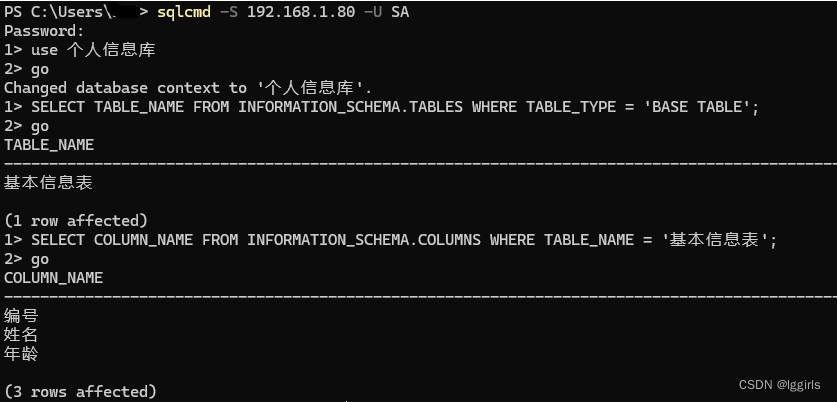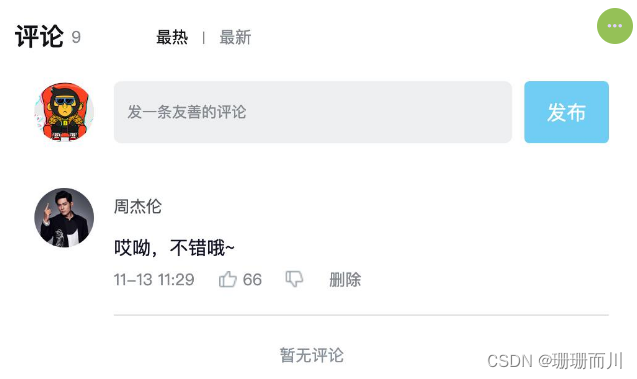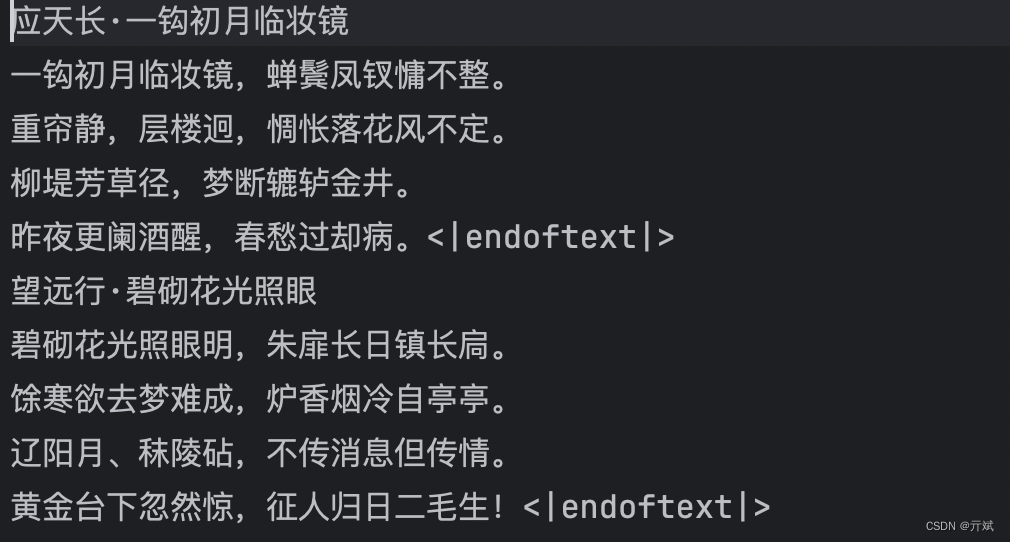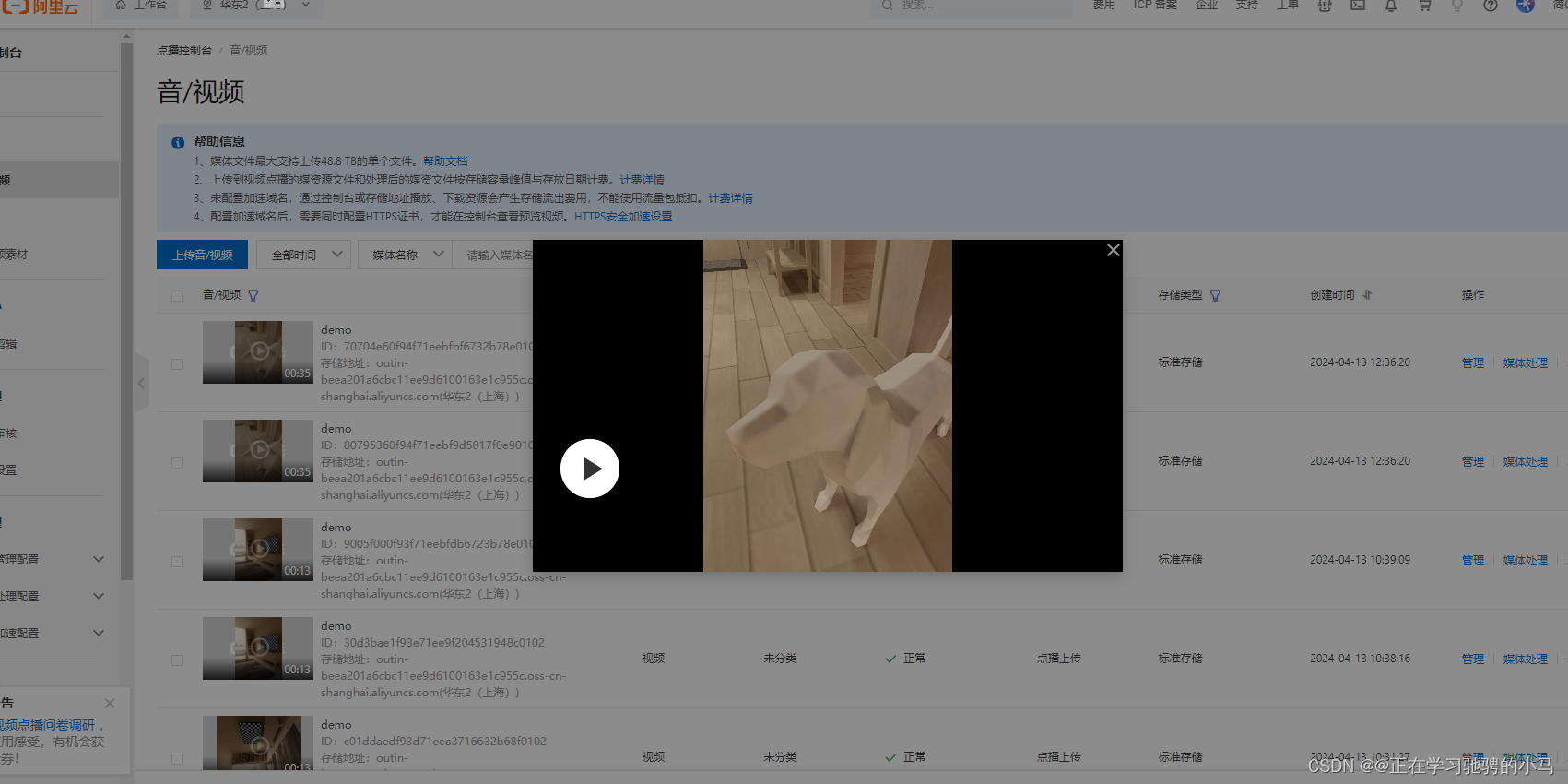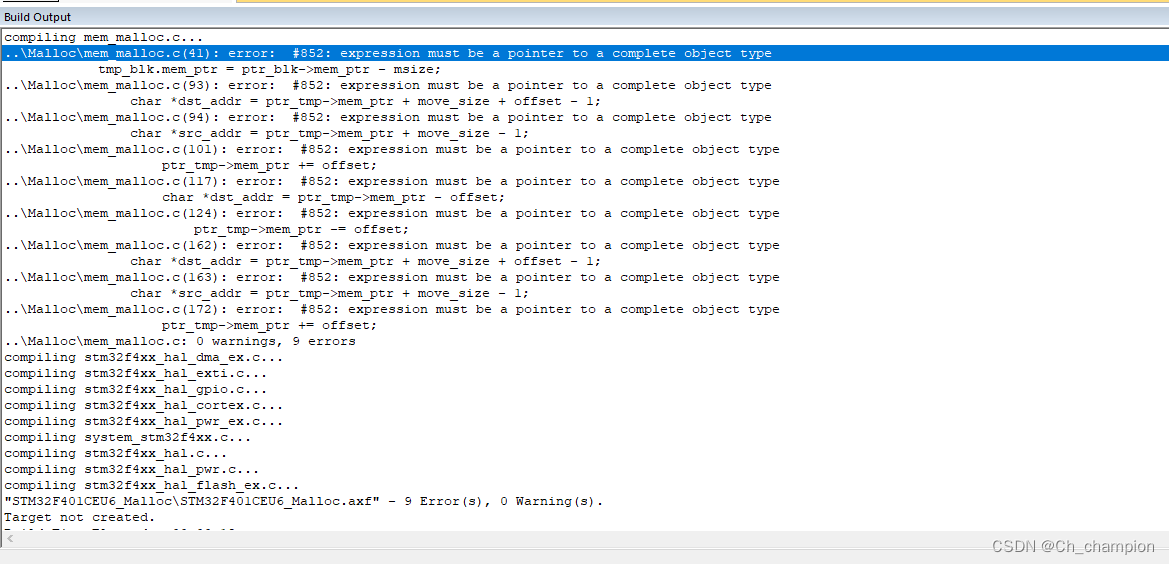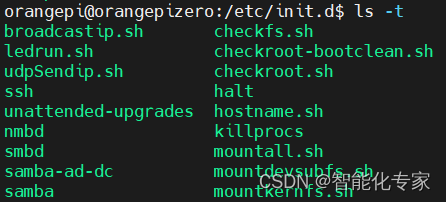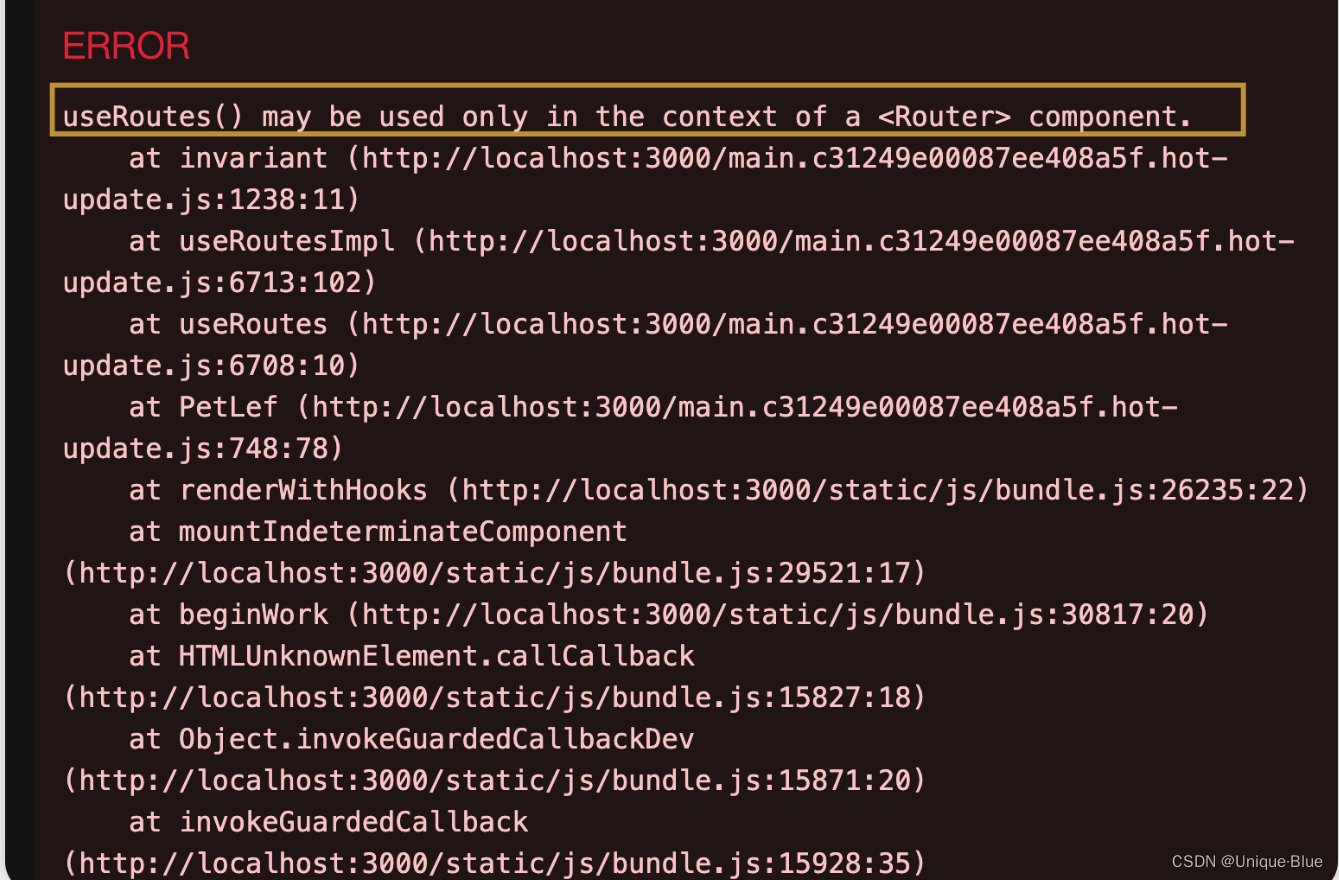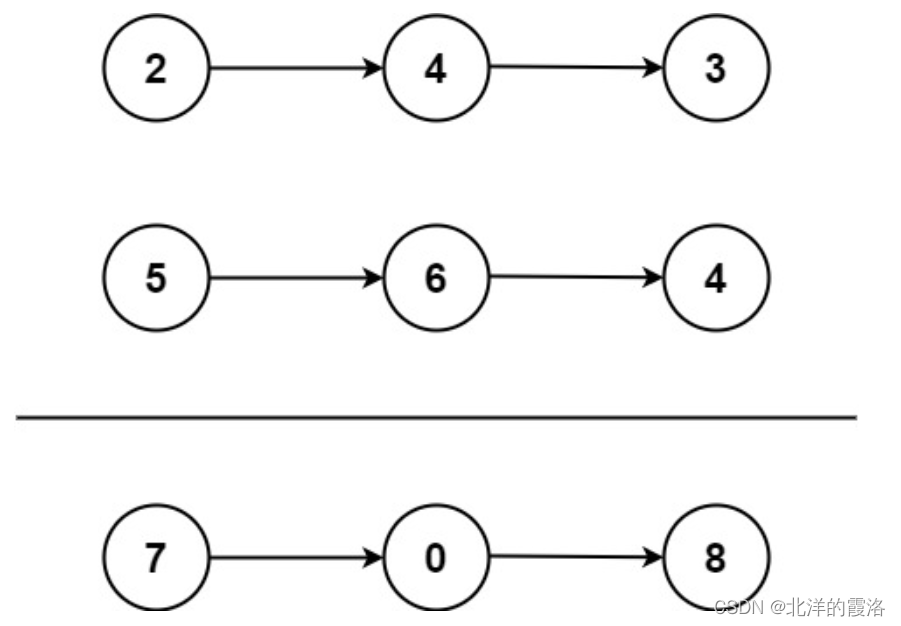目录
一、filter函数的常见应用场景:
二、filter函数的使用注意事项:
1、filter函数:
1-1、Python:
1-2、VBA:
2、相关文章:
个人主页:非风V非雨-CSDN博客

一、filter函数的常见应用场景:
filter函数在Python中有多种实际应用场景,它通常用于从可迭代对象中筛选出满足特定条件的元素。以下是一些具体的应用示例:
1、筛选数字:筛选出一个列表中的所有偶数或奇数。
2、筛选字符串:从字符串列表中筛选出特定长度的字符串。
3、筛选文件:在处理文件或目录时,筛选出特定类型的文件。
4、筛选对象属性:从对象列表中筛选出具有特定属性的对象。
5、筛选字典中的项:从字典中筛选出满足条件的键值对。
6、数据清洗:在处理数据集时,可以使用filter()来清洗数据,去除不符合条件的数据点。
这些只是filter()函数的一些常见应用场景,实际上它可以用于任何需要从可迭代对象中筛选出特定元素的情况。需要注意的是,由于filter()返回的是迭代器,如果需要多次访问筛选后的结果,或者需要将其与其他Python数据结构(如列表)进行交互,通常需要将迭代器转换为列表或其他类型。

二、filter函数的使用注意事项:
在Python中使用filter()函数时,下列注意事项需要牢记:
1、输入类型:filter()函数的第一个参数是一个函数,第二个参数是一个可迭代对象(如列表、元组、字符串等),确保传递给filter()的第二个参数是一个可迭代对象,否则会出现类型错误。
2、函数返回值:传递给filter()的函数应该返回一个布尔值(`True`或`False`)。filter()会基于这个返回值来决定是否将元素包含在返回的迭代器中,如果函数返回非布尔值,将会导致不可预期的结果。
3、迭代器的使用:filter()函数返回的是一个迭代器,而不是列表或其他类型的可迭代对象。如果需要列表,你需要将迭代器转换为列表,例如使用list()函数。
4、性能考虑:对于大型数据集,使用filter()可能会比使用列表推导式(list comprehension)稍慢一些,因为列表推导式可以一次性构建结果列表,而filter()需要逐个元素进行过滤。在性能敏感的代码中,可能需要考虑使用其他方法。
5、可读性:虽然filter()函数在某些情况下可以使代码更简洁,但有时候使用列表推导式可能更直观和易读。选择哪种方法取决于具体的场景和个人的编码风格。
6、Python版本差异:在Python 2中,filter()函数直接返回列表,而在Python 3中返回的是迭代器。如果你在Python 2和Python 3之间迁移代码,需要注意这个差异。
7、空迭代器的处理:如果传递给filter()的可迭代对象是空的,或者过滤条件不满足任何元素,那么返回的迭代器将为空。在迭代或使用返回的迭代器之前,你可能需要检查它是否为空。
8、函数定义的位置:如果传递给filter()的函数是在filter()调用之后才定义的,那么将会引发一个`NameError`,因为Python在运行时需要知道这个函数的定义。确保在调用filter()之前已经定义了函数。
只有遵循这些注意事项,你才能更有效地使用filter()函数来处理数据。然而,在很多情况下,使用列表推导式或其他Python特性可能更加灵活和直观。因此,在选择使用filter()之前,最好先评估一下其他选项是否更适合你的需求。
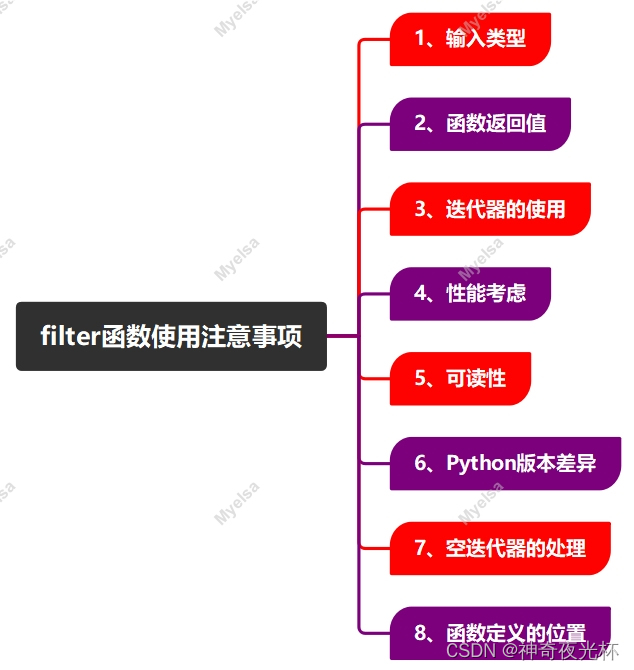
1、filter函数:
1-1、Python:
# 1.函数:filter
# 2.功能:用于过滤可迭代对象中不符合条件的元素,即通过指定条件过滤序列
# 3.语法:filter(function, iterable)
# 4.参数:
# 4-1. function:用于实现判断的函数,可以为None
# 4-2. iterable:可迭代对象,如列表、range对象等
# 5.返回值:返回一个由符合条件的元素组成的新迭代器
# 6.说明:
# 7.示例:
# 应用1:筛选数字
def is_even(num):return num % 2 == 0
even_numbers = filter(is_even, range(100))
print(even_numbers)
print(list(even_numbers))
# <filter object at 0x000002AF671F1240>
# [0, 2, 4, 6, 8, 10, 12, 14, 16, 18, 20, 22, 24, 26, 28, 30, 32, 34, 36, 38, 40, 42, 44, 46, 48, 50, 52, 54, 56, 58,
# 60, 62, 64, 66, 68, 70, 72, 74, 76, 78, 80, 82, 84, 86, 88, 90, 92, 94, 96, 98]# 应用2:筛选字符串
def is_length_three(s):return len(s) <= 5
words = ['Myelsa', 'Jimmy', 'Lucy', 'Bob', 'Bruce']
three_letter_words = list(filter(is_length_three, words))
print(three_letter_words)
# ['Jimmy', 'Lucy', 'Bob', 'Bruce']# 应用3:筛选文件
import os
def is_image_file(filename):return filename.endswith(('.png', '.jpg', '.jpeg', '.gif'))
files = os.listdir(os.getcwd())
image_files = list(filter(is_image_file, files))
print(image_files)
# ['input.jpg', 'output.jpg']# 应用4:筛选对象属性
class Person:def __init__(self, name, age):self.name = nameself.age = age
def is_adult(person):return person.age >= 18
people = [Person('Myelsa', 43), Person('Bruce', 6), Person('Jimmy', 15)]
adults = list(filter(is_adult, people))
for adult in adults:print(adult.name)
# Myelsa# 应用5:筛选字典中的项
def filter_dict_items(dictionary, condition):return {k: v for k, v in dictionary.items() if condition(k, v)}
data = {'a': 1, 'b': 2, 'c': 3, 'd': 4}
filtered_data = filter_dict_items(data, lambda k, v: v > 2)
print(filtered_data)
# {'c': 3, 'd': 4}# 应用6:清洗数据
data = [1, 2, None, 4, 5, '', 6]
def is_valid(item):return item is not None and item != ''
cleaned_data = list(filter(is_valid, data))
print(cleaned_data)
# [1, 2, 4, 5, 6]# 其他应用
# 在Python中,filter()函数的高阶用法通常涉及到与其他高阶函数(如`map()`、`reduce()`)或函数式编程特性的结合,
# 以及使用lambda表达式来定义匿名函数作为过滤条件。以下是一些filter()函数的高阶用法示例:
# 结合Lambda表达式
# Lambda表达式是一种创建匿名函数的简单方式,经常与filter()一起使用来定义过滤条件
numbers = [1, 2, 3, 4, 5, 6, 7, 8, 9, 10]
# 使用lambda表达式筛选偶数
even_numbers = list(filter(lambda x: x % 2 == 0, numbers))
print(even_numbers)# 链式过滤
# 你可以通过组合多个filter()函数来实现链式过滤,即一个过滤器的输出作为另一个过滤器的输入
# 假设有一个数字列表,先筛选出偶数,再从中筛选出大于5的数
numbers = [1, 2, 3, 4, 6, 7, 8, 9, 10]
# 链式过滤:先筛选偶数,再筛选大于5的数
filtered_numbers = list(filter(lambda x: x > 5, filter(lambda x: x % 2 == 0, numbers)))
print(filtered_numbers)# 与生成器表达式结合
# 生成器表达式是另一种创建迭代器的方式,它们可以与filter()结合使用,以更简洁的方式表达过滤逻辑
numbers = [1, 2, 3, 4, 5, 6, 7, 8, 9, 10]
# 使用生成器表达式筛选偶数,并与filter结果比较
even_numbers_gen = (x for x in numbers if x % 2 == 0)
even_numbers_filter = filter(lambda x: x % 2 == 0, numbers)
# 二者结果相同,但生成器表达式语法更简洁
print(list(even_numbers_gen))
print(list(even_numbers_filter))# 自定义过滤函数
# 除了使用lambda表达式,你还可以定义自己的过滤函数,并在filter()中使用它
def is_prime(n):if n < 2:return Falsefor i in range(2, int(n ** 0.5) + 1):if n % i == 0:return Falsereturn True
numbers = [1, 2, 3, 4, 5, 6, 7, 8, 9, 10]
# 使用自定义的is_prime函数筛选质数
primes = list(filter(is_prime, numbers))
print(primes)# 与其他高阶函数结合
# filter()函数经常与其他高阶函数(如`map()`、`reduce()`)一起使用,以在数据管道中执行一系列的转换和过滤操作
from functools import reduce
numbers = [1, 2, 3, 4, 5, 6, 7, 8, 9, 10]
# 首先使用map()将每个数平方,然后使用filter()筛选大于20的数,最后使用reduce()求和
squared_numbers = map(lambda x: x ** 2, numbers)
filtered_squared_numbers = filter(lambda x: x > 20, squared_numbers)
sum_of_filtered = reduce(lambda x, y: x + y, filtered_squared_numbers, 0)
print(sum_of_filtered) # 输出: 105 (即5^2 + 6^2 + 7^2 + 8^2 + 9^2 + 10^2)1-2、VBA:
略,待后补。2、相关文章:
2-1、Python-VBA函数之旅-bytes()函数
2-2、Python-VBA函数之旅-callable()函数
Python算法之旅:Algorithm
Python函数之旅:Functions
个人主页:https://blog.csdn.net/ygb_1024?spm=1010.2135.3001.5421






